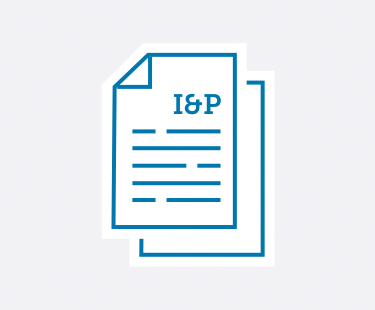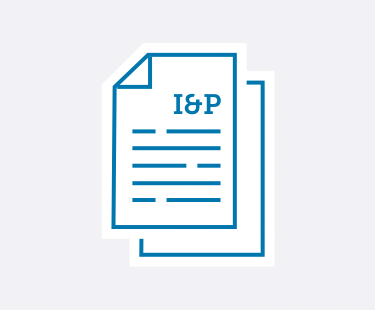

Learn practical strategies to handle emerging trends and leadership challenges in private schools.
No matter if you’re a School Head, Admission Director, Development Director, Board member, or any other private school administrator—Ideas & Perspectives®, ISM’s premier private school publication, has strategic solutions for the pervasive problems you face.
- Tuition not keeping pace with your expenses? In I&P, explore how to use strategic financial planning to create your budget and appropriately adjust your tuition.
- Enrollment dropping off? Discover how to implement the right admission and enrollment management strategies that engage your community—and fill your classrooms.
- Trouble retaining teachers? Learn how you can best support your teachers using ISM’s Comprehensive Faculty Development framework. Your faculty members will become more enthusiastic about their roles—which ultimately improves student outcomes.
- Fundraising campaigns not as successful as you’d hoped? Implement ISM’s practical advice and guidance to build a thriving annual fund, construct an effective capital campaign, and secure major donors—no matter your community size or location.
- Not sure how to provide professional development—for you and your staff? Learn ways to develop and fund a successful professional development strategy. You can improve teacher-centered satisfaction and growth, which in turn strengthens student-centered learning.
- Problematic schedule? You can master the challenges of scheduling with the help of ISM’s practical advice, based on our experience with hundreds of schools and our time-tested theories.
- And so much more.
I&P has shared targeted research, up-to-date insight, and sound theory with school leaders since 1975. More than 8,500 private school decision-makers find the answers to their schools’ administrative and governance matters in our advisory letter. We give you the strategic answers you need.
As an ISM Silver or Gold member, you not only receive issues online and in print 10 times a year, but you have access to 900+ articles in our web archive. Need help? It’s at your fingertips! Learn more and sign up for ISM's membership here.
Search
See the articles from our latest issue of Ideas & Perspectives.
The Role of the Strategic Board in the Advancement Model
Volume 40 No. 6 // May 11, 2015
When you look at the Comprehensive Advancement Model (see the graphic in the accompanying article), “Strategic Board” forms the base. Simply stated, the effectiveness of your advancement program is inextricably linked to your school’s overall stability, and the Board is the guarantor of stability. When the Board operates strategically—focusing on sustaining financial viability and excellence for future generations of students—every aspect of school operations performs at a higher level, including advancement efforts.
1. Already a member? Click here to login.
2. Not a member? Click here to become a member.
3. Not sure? We'll help you figure it out.
Summer Program: The Third ‘Semester’—Lower and Middle School
Volume 40 No. 5 // April 17, 2015
In the upper school, planning the summer program as the third semester (S3) provides a way to develop the curriculum more profoundly.1 In the middle and lower schools, it is slowly going to transition to an intentional process that builds on traditional fun and challenge. Those programs of sports, arts, and general and specific interest camps will continue to be a viable model as schools meet the marketplace need for child care during the summer break. However, schools more proactive in their approaches might see this move to S3 as an opportunity to challenge their paradigms. There will be two changes that impact what schools do—intentionality and innovation.
1. Already a member? Click here to login.
2. Not a member? Click here to become a member.
3. Not sure? We'll help you figure it out.
Financial Sustainability, Value, and Unnecessary Anxiety
Volume 40 No. 5 // April 17, 2015
Every business enterprise, whether nonprofit or for-profit, has a basic responsibility to attend to sustainability. Businesses establish a mission to serve their clientele, whether shareholders or stakeholders, with the intention of being successful for the long term. However, in the private-independent school sector, sustainability and the discussions around this topic have become increasingly focused on a misplaced concern. Conversations about sustainability often begin from the following premise—“Our tuitions have outpaced inflation for years. If we do not address this, the numbers suggest that our schools may not be sustainable.” ISM believes that addressing the sustainability issue in this manner leads to well-intentioned but wrong conclusions.
1. Already a member? Click here to login.
2. Not a member? Click here to become a member.
3. Not sure? We'll help you figure it out.
The Role of the Board’s Buildings and Grounds Committee
Volume 40 No. 5 // April 17, 2015
Rather like the Finance Committee, it is hard to imagine a school that would not have a Buildings and Grounds Committee. Its role is complementary to the Finance Committee, caring for the current facility (including grounds) and planning for the facility’s development, reinvention, and sometimes expansion into the future. A metric in the Fourth Iteration of the ISM Stability Markers® (Stability Marker K, “Quality of Facilities,” and Marker L,1 “Master Property/Facilities Plan”) provides the role of the Buildings and Grounds Committee. This article will fully articulate what that metric includes.
1. Already a member? Click here to login.
2. Not a member? Click here to become a member.
3. Not sure? We'll help you figure it out.
Summer Program: The Third ‘Semester’—Upper School
Volume 40 No. 4 // March 23, 2015
In the first article of this series, we outlined the conceptual shift of taking summer program from an extrinsic activity, only marginally important to the school, to an intrinsic activity that is central to the school’s mission. In this article, we outline some key questions from the upper school student’s point of view. The principal objection to the third semester has nothing to do with organization, faculty, money, or facilities. Rather, the principal objection is voiced by the student: I can’t imagine doing in the third semester what I’ve been doing all year. A third “semester” cannot be successful if the other two semesters are not considered—by the students themselves—as being of high value, entertaining, inspirational, and engaging.
1. Already a member? Click here to login.
2. Not a member? Click here to become a member.
3. Not sure? We'll help you figure it out.
A Guide to Responsible Survey Data Analysis
Volume 40 No. 4 // March 23, 2015
This is the third article in a three-part series on collecting and using data to assess your school and advance your school’s strategic initiatives. The first article dealt with building a “culture of data” in your school. The second outlined best practices for launching a successful survey initiative—from choice and design of the surveys to timing and implementation strategies. This article examines proper analysis and use of the data you have collected. While this is the last step chronologically, it is far from least. Data misinterpreted or misused can be more detrimental than no data at all, with consequences ranging from divisiveness within a faculty to expensive and misguided decisions to dramatic public relations issues with legal ramifications. These consequences are not unusual or hypothetical; this article is the response to a need presented to ISM by schools that have faced exactly these problems.
1. Already a member? Click here to login.
2. Not a member? Click here to become a member.
3. Not sure? We'll help you figure it out.
Employment Practices Liability: Knowing Your Risk
Volume 40 No. 3 // March 2, 2015
A school refused to renew a teacher’s contract. She sued, claiming retaliation because of her participation in an earlier Equal Employment Opportunity Commission (EEOC) discrimination charge against the school by another employee. She claimed a failure to promote or transfer her position, harassment, and emotional distress. The school lost its Motion for Summary Judgment. The litigation was settled after about three years for $125,000, with another $106,000 spent in Costs of Defense. A school terminated a third-grade teacher after a family, a large donor, threatened to withdraw their daughter if the teacher was not fired. The claimant had taught at the school for 12 years without incident. Although the school denied any wrongdoing, there was little documentation to support the claimant’s termination. To avoid costly litigation, the school settled this matter for $200,000
1. Already a member? Click here to login.
2. Not a member? Click here to become a member.
3. Not sure? We'll help you figure it out.
Scheduling and Length of Period
Volume 40 No. 3 // March 2, 2015
There has been a raging battle over the past three decades around the kind of schedule that best benefits students. This has, generally speaking, taken two sides. On one side are those who have hewn to a “traditional” schedule of seven 40-minute periods a day, with every class meeting every day for the entire year.1 On the other side are those who have embraced what is known as the “block” schedule. This has many variations. In its pure form, it is structured as four 90-minute periods a day with each class meeting daily for a semester. The classes then change and the format is repeated.2 The following table delineates the major technical differences between these two types of schedule.
1. Already a member? Click here to login.
2. Not a member? Click here to become a member.
3. Not sure? We'll help you figure it out.
Endowment for Faculty Excellence
Volume 40 No. 3 // March 2, 2015
In a recent article on endowment, we wrote: “Endowment is no panacea for poor governance, overreaching debt, or an unwillingness to charge what it costs. However, in a school that is mature in its governance and operations, endowment will be a powerful aid to enhance the school’s ability to deliver its mission.” While the optimum gift is unrestricted, many donors are inspired to donate in support of faculty excellence, thus directing their gift for a specific purpose. Setting up such an endowment is not quite as simple as just putting money in the bank. The following suggestions for both organization and intent are meant to provide guidance and to stimulate your own thinking. All boxed comments are illustrative only.
1. Already a member? Click here to login.
2. Not a member? Click here to become a member.
3. Not sure? We'll help you figure it out.
Summer Program: The Third ‘Semester’
Volume 40 No. 3 // March 2, 2015
Most private-independent schools now run some form of summer program. As more schools move toward year-round schooling, ISM makes the argument that the summer program can represent any school’s third semester. This, the first article in a series, lays out the broad framework for this position. Following articles will focus on how this concept affects upper school students, lower and middle school students, and your school’s finances and administration.
1. Already a member? Click here to login.
2. Not a member? Click here to become a member.
3. Not sure? We'll help you figure it out.


